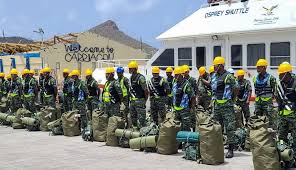In keeping with its promise to enhance connectivity and modernize national infrastructure, the Government of Guyana has embarked on an ambitious and transformative agenda to construct new highways, roads, and bridges that link regions and empower communities. These infrastructure projects are not merely investments in concrete and steel—they represent strategic efforts to unite the country, support economic growth, and improve the quality of life for all Guyanese.
Among the flagship undertakings currently in progress are the Denmark Hill Bypass, the Wales Development Highway, and the Linden to Mabura Road upgrade, all of which serve as vital arteries in the country’s evolving transport landscape. According to the Ministry of Public Works, these projects form part of the broader infrastructural modernization strategy laid out in Guyana’s National Development Plan.
The Wales Development Highway, which connects the new Wales Development Zone with the East Bank of Demerara, is poised to be a critical support route for the emerging gas-to-energy project. Once completed, this highway will not only improve access to industrial zones but also catalyze economic activity across Regions 3 and 4. This project, as reported by the Department of Public Information (DPI) in 2024, is expected to facilitate heavy-duty transport and logistics related to the energy and manufacturing sectors.
Simultaneously, the Denmark Hill Bypass—currently under phased development—will provide a crucial link from Georgetown through the East Coast corridor, alleviating congestion and reducing travel time for commuters. Similarly, the Linden to Mabura Road, backed by a US$190 million financing agreement between the Government of Guyana and the Caribbean Development Bank (CDB), will mark a historic leap in connectivity between coastal and hinterland regions. The Ministry of Finance highlighted this initiative as a game-changer in the government’s Low Carbon Development Strategy 2030 (LCDS 2030).
Together, these projects exemplify Guyana’s long-term infrastructure vision: building not only roads but also forging stronger national unity. From coastal towns to remote hinterland villages, this connectivity fosters inclusion, opens economic frontiers, and promotes national integration.
As a government high official remarked during a recent inspection of the road works, “These roads are not just about transport—they are about bridging gaps between communities, creating opportunities, and building a Guyana that leaves no one behind” (Office of the President, 2024).
Indeed, this is what real progress looks like. A united Guyana, connected by modern infrastructure and shared ambition.




